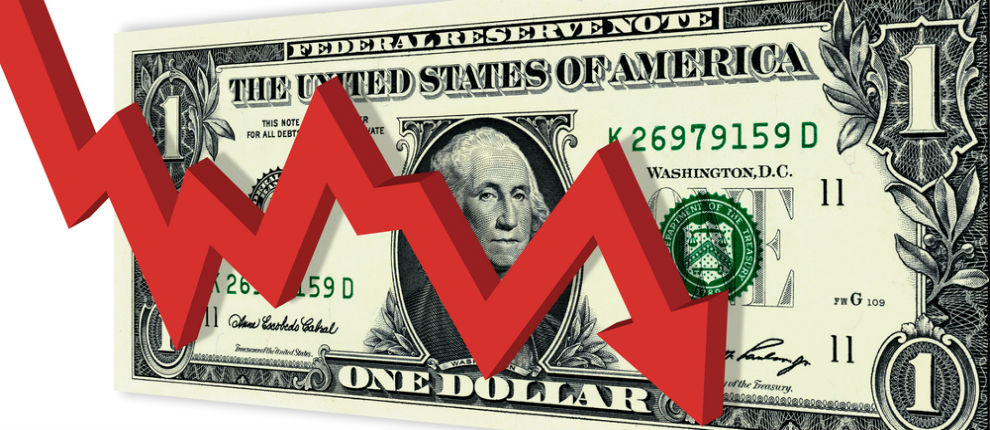RIO DE JANEIRO, BRAZIL – Since May 21, the US currency has lost 4.97% in value against the Brazilian Real and is at its lowest price since December 2020.
Over the R$5.40 level since February, the dollar began a downward trend in early May when it broke this threshold, accelerating its decline since May 21 and heading towards the R$5.00 mark.

The trend gained momentum after the release of Brazil’s first quarter GDP (Gross Domestic Product), which came in better than expected. Nevertheless, investors are still in doubt as to whether this exchange rate will be sustained or whether there is room for further drops.
Although the drop had been occurring since last week, it was only on Tuesday that it drew attention by breaking the R$5.20 barrier, which was also the minimum for 2021. Consequently, the Real was the great highlight on the global exchange markets yesterday.
This occurred after the GDP posted growth of 1.2% between January and March, marking its third consecutive quarterly gain, one that was higher than expected by the market, which fuels better prospects on several activity aspects, from foreign exchange flow to fiscal numbers.
“It’s an important day for the Brazilian Real, with the dollar dropping below the critical R$5.20 threshold for the first time in 2021!” commented Robin Brooks, chief economist at the Institute of International Finance (IIF), on Twitter.
Brooks sees the Real still at an “extremely undervalued” level, given that the currency has recovered with the strong rise in commodity prices, according to him. The “fair” value of the exchange rate is R$4.50 per dollar, according to his calculation.
In addition to the commodities rally, analysts had been pointing to a more positive scenario for Brazil, depending only on more solid data and proposals on the economic side, but particularly on the fiscal issue. Another important point is the adjustment in monetary policy.
“There are still discrete indications of a resumption of economic activity in Brazil – the 1st quarter GDP points in this direction – and, with the new performance profile of the Central Bank, correcting the interest rate, making it compatible with the Brazilian reality and the present inflationary parameters, the dollar price is starting to reduce the exaggeration that occurred in the formation of its price,” said Sidnei Nehme, economist and executive director of NGO Corretora, in a note.
After the GDP posted stronger figures, specialists began to emphasize that the economy now seems to be showing firmer signs of gaining traction, with expectations of even more steam in the second semester as a broader vaccination should allow for a faster and more widespread reopening of activity.
On Tuesday, the Bank of America reduced its projection for the dollar from R$5.40 to R$5.20 at the end of this year, citing the prospect of more positive economic growth in 2021 – which the bank also revised yesterday – an environment of high commodity prices and the expected trajectory of a higher SELIC rate.
BNP Paribas says it is “optimistic” about the Real, expecting a dollar around R$5.00 in December. For analysts, this improvement is due to the perspective that the Brazilian economy will accelerate, in addition to a normalization of interest rates that will restore the return rate (“carry”) of the Real to “competitive” levels.
In turn, XP Asset says that there is a favorable scenario for the Real “unseen for some time,” driven by a drop in the risk premium due to the better fiscal outlook, higher economic growth and higher interest rates.
“All drivers point to a more favorable exchange rate flow,” said Fernando Genta, chief economist at XP Asset Management, in a live stream. The manager is now working with a dollar at around R$5.20 for the end of the year, but could, in alternative scenarios, drop to R$5.00 or even R$4.90.
For the manager, optimism with the country increased after the most recent economic data, which led to a new projection for the 2021 GDP between 5% and 5.5%. “We will have a second quarter that is still somewhat challenging, but as vaccination progresses, we will have a reopening and the service sector should benefit,” said the economist.
Despite the wave of optimism, NGO’s Nehme points out that several risks are still on the radar: “the feeling is that the country wants to ‘live the present moment’ with no fears of what is to come, such as the probability of a third wave of the coronavirus pandemic, or even a water crisis, which would have a strong impact on economic activity,” he says, also alerting to the chance of an international appreciation of the dollar in the event of a tougher monetary policy in the U.S.
“Even the Brazilian political scenario (…) seems to have less consideration from the financial market at the moment. Vulnerabilities are still on the radar and it is unwise not to consider them as feasible,” he adds.
Nevertheless, given this improved scenario, the dollar may now enter a new trend. According to José Faria Júnior, director of Wagner Investimentos, the market monitors the possibility of the exchange rate reversing the long-term upward trend should it actually manage to settle below the R$5.187 mark.
On Wednesday, at 4 PM (Brasília time), the American currency was down 1.29%, quoted at R$5.079 to buy and R$5.08 to sell, heading for its lowest closing since December 17, when it stood at the same R$5.079.

